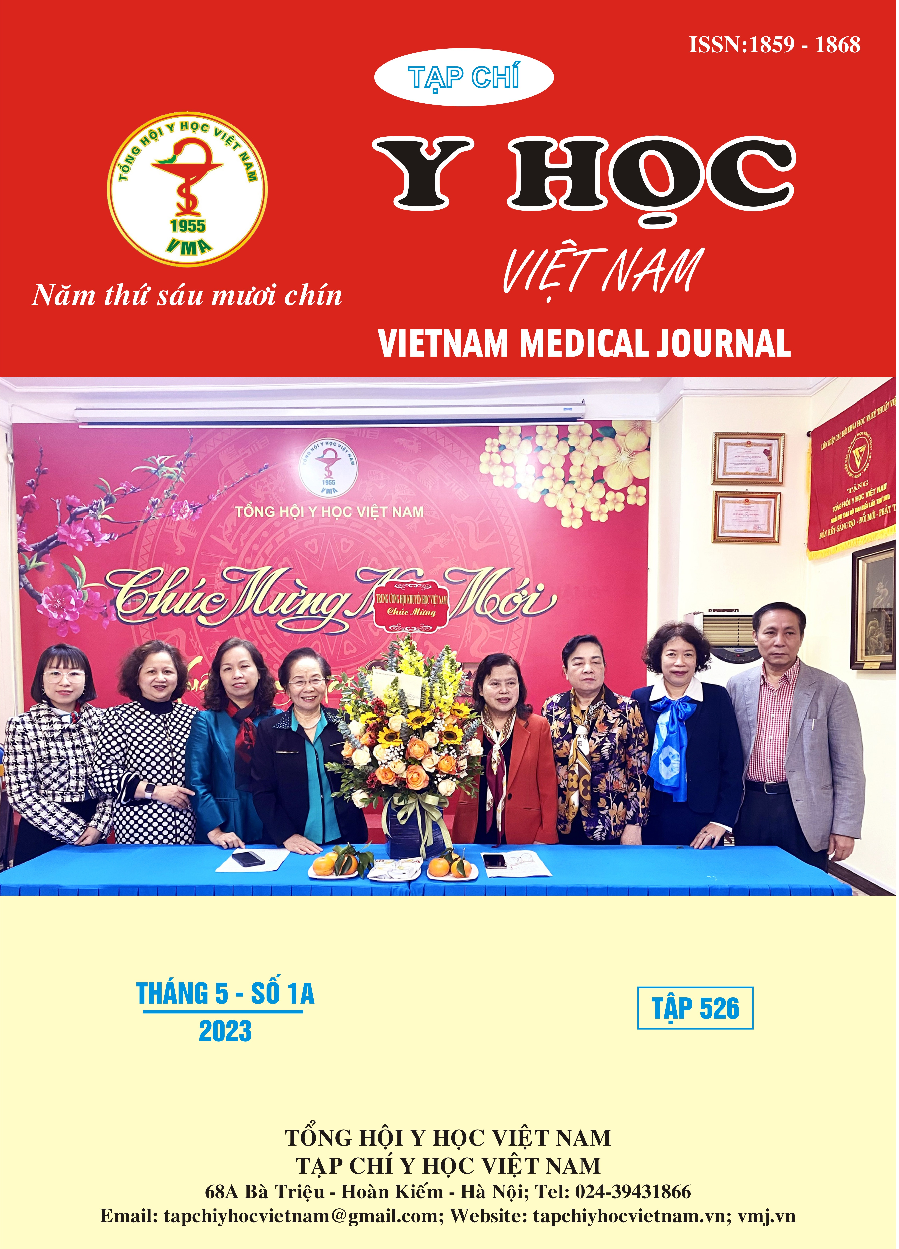QUALITY OF LIFE OF PATIENTS AFTER MAXILLOFACIAL FRACTURE SURGERY
Main Article Content
Abstract
Background: Traumatic Fractures of the maxillofacial bone is a common injury in the general trauma setting. Trauma easily leaves sequelae affecting facial aesthetics and patient psychology (NB), causing significant negative impact on quality of life. Objectives: To survey the quality of life of patients after surgery for maxillofacial trauma. Method: A cross-sectional descriptive study was conducted on 60 patients after maxillofacial fracture surgery at E Hospital from July 2021 to April 2022. Result: The mean score of quality of life according to the OHIP-14 VN scale at 1 month after surgery was 10.83 ± 4.37 lower than before surgery 24.40 ± 10.37, the difference was significant. statistical with p < 0.001. The percentage of patients with poor quality of life decreased from 85% before surgery to 26.7% 1 month after surgery. Conclusion: The quality of life of patients with maxillofacial trauma was significantly improved 1 month after surgery
Article Details
Keywords
quality of life, maxilofacial fractures, OHIP-14 VN
References
2. Lewandowski B., Szeliga E., Czenczek-Lewandowska E., et al. (2018). Comparison of oral-health-related quality of life in patients in the short- and long-term period following lower-facial injury and fractures – preliminary report. Dental and Medical Problems, 55(1), 57–62.
3. Sikora M., Chlubek M., Grochans E., et al. (2019). Analysis of Factors Affecting Quality of Life in Patients Treated for Maxillofacial Fractures. IJERPH, 17(1), 4.
4. Boljevic T., Vukcevic B., Pajic S., et al. (2019). Oral health-related quality of life of patients undergoing different treatment of facial fractures: The OHIP-14 questionnaire. Nigerian journal of clinical practice, 22, 1213–1217.
5. Soh C.L., Tan P.G., and Mohd Nor N. (2021). Oral health related quality of life after treatment in maxillofacial trauma patients. Journal of Oral and Maxillofacial Surgery, Medicine, and Pathology, 33(3), 267–271.
6. Conforte J.J., Alves C.P., Sánchez M. delP. R., et al. (2016). Impact of trauma and surgical treatment on the quality of life of patients with facial fractures. International Journal of Oral and Maxillofacial Surgery, 45(5), 575–581.
7. Omeje K.U., Adebola A.R., Efunkoya A.A., et al. (2015). Prospective study of the quality of life after treatment of mandibular fractures. British Journal of Oral and Maxillofacial Surgery, 53(4), 342–346.
8. Viozzi C.F. (2017). Maxillofacial and Mandibular Fractures in Sports. Clinics in Sports Medicine, 36(2), 355–368.


